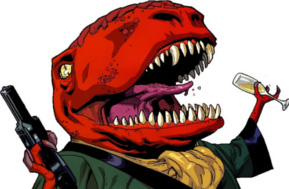Currency in Mir
Nation of Thul
The currency of the Nation of Thul are small, brass, silver and gold coins forged by the Nation to be used to barter with, pay wages and in exchange for goods and services. Each coins face bears a resemblance to the two founders of Thul, the Master on the Silver coin, The Student on the brass, and Belief in disguise as the Patron upon the gold. The reverse face of each coin holds an engraving of the Thul coat of arms and the date in which it was minted.
Tu Empire
The Tu Empire , being the longest standing nation on Mir and heard of around the globe has a currency that is considered the standard of value by most other nations, with exchange rates being based off of it. The Towa, as it's known in Tu is a long, thin slice of Jade with etchings of the Tu Empire heraldic seal. It is seen through out the continent of Insennis and accepted in almost all nations but the Nation of Thul.
They are known for lending money to other sovereigns and are often referred to as the 'Bank of the Innerheart' for their many investments and funding they carry out across the large region.
Republic of Seva
The Republic of Seva currency is made up of small, silver colored coins in varying sizes. They are typically referred to as 'pieces' and there are five different types. a 1, 2, 5, 20 & 100. They typically are stamped with the current head of the Representatives, or past delegates of fame. While coinage remains the default way of trade in Seva, there has been a push to switch to a 'paper' money in the future.
Zjin'au Territories
Currency of the Zjin'au Territory is a bit abstract in comparison to the other major political groups of Insennis. They don't value their currency in gold or by weight of salt, but by time. They use a system of sticks, taken from the long, slender saplings of their swamp and notch them as they do work for another or provide a service, a notch representing an hour. They can then trade these notches to other in exchange for a goods or service in turn. It is typically a system only used between to individuals in a way to trade and manage favors, rather than a true currency or system of valueing goods and service's. When not applicable they simply borrow or barter for goods, as their society tends to be very inclusive and helpful to one another.
Exchange Rates & Value
| Currency | Value (+/- of a Tili) | Soveriegn |
|---|---|---|
| Thul Brass | .85 to 1 Towa. | Nation of Thul |
| Towa | 1.00 (standard) | Tu Empire |
| Sevan Bronze | 1.45 to 1 Towa | Republic of Seva |
Manufacturing process
Stamps, presses and paper printing are the most commonly found ways of making currencies in Mir.
Item type
Currency & Deeds
Rarity
Controlled
Weight
varies
Dimensions
varies
Raw materials & Components
Most currencies are typical made or crafted from rare metals or gemstones. Lesser known materials include minerals and substances such as salt or sugar being used in place of an actual currency.
Tools
Major nations typically employ mints from with in their treasury's and closely monitor it's creation & destruction in an effort to combat the effects of inflation and compete with one another for having the higher valued coinage.
Remove these ads. Join the Worldbuilders Guild











I like! Great jumping off point to get into both the individual currencies, and into the economic cultures of your world!
Thanks much! The challenge sparked some inspiration!